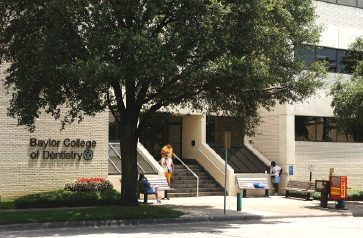Anaplastology
Sometimes we simply learn the most about a thing when we immerse ourselves in it. Last week I had the opportunity to do just that, by shadowing anaplastologist, Suzanne Verma, throughout her day to day at Baylor. Her work is based in the Baylor College of Dentistry and seeing an anaplastologist working in a dental environment like that really solidified for me the history of how anaplastology has grown out of dentistry.
I was given the opportunity to see some of the work of Dr. Jorge Gonzalez while I was there as well. He is a prosthodontist, which is actually rather similar to an anaplastologist with the exception that they work intra-orally, whereas an anaplastologist works extra-orally. Many patients will require both an anaplastologist and a prosthodontist, so having these two working in such close proximity seems to facilitate care in those types of cases. There also just seems to be a good symbiosis there, as they are similar fields which utilize similar solutions to problems, but also varied enough to introduce different ideas into each other.
While I was there, I spent a lot of time looking at materials and equipment. From the various types of implants used across anaplastology and dentistry, to the various materials utilized in taking impressions, or the bigger pieces of equipment used in the lab, or even the scanners and technology available. One of the problems that I hadn’t been previously aware of is that there is so much equipment and software being developed for dentistry, but much of it ignores the needs of an anaplastologist. So sometimes you can have an amazing program that allows you to scan shapes and plan surgical implants, but if you can’t tell it which teeth you want to replace, it won’t allow you to continue. Because anaplastology is a still a small field, there aren’t many manufacturers gearing their products toward it.
A couple of favored companies stood out in my time at Baylor, one was Nobel Biocare, which is a direct descendant of Branemark and his early research which discovered osseointegration in the first place. These guys make the best implants and abutments for anaplastology use today, and they also develop impressive scanners and software. And the other was Factor II, Inc. which makes a lot of the silicones and adhesives used in silicone prosthetics today.
Personally, I find myself curious as to what technologies are utilized among brain surgeons or just in general manufacturing that might be of use in an anaplastology clinic. I can think of so many things that would cover some portion of the needs there, but I’m at a loss for anything that would truly be a perfect match. Actually, I find myself thinking a lot about what sciences and industries have tools and expertise to offer each other. Perhaps it is that tendency to look across fields that I have to offer to any individual one myself.
